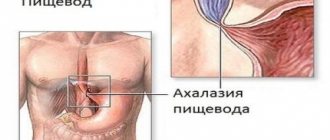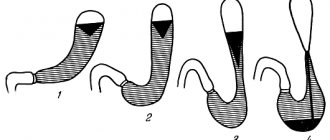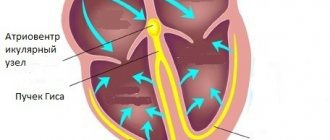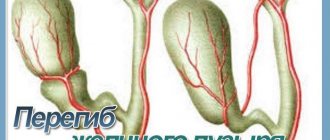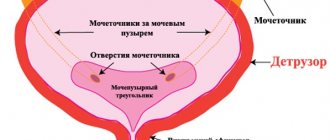Author's rating
Author of the article
Green Elena Stanislavovna
Otolaryngologist of the second category
Articles written
665
about the author
Treatment of pharyngitis and laryngitis have similar principles, but some of the therapeutic techniques used differ. In order to properly treat a particular disease, you should know which organs it affects, what is the provoking factor in the development of the disease and, accordingly, what drugs are used for etiotropic, symptomatic treatment. Pharyngitis and laryngitis are no exception.
What is laryngitis?
The disease is characterized by inflammation of the laryngeal mucosa, which has been tormenting a person for a long time. Periodically, it can worsen, making the symptoms more pronounced.
Often chronic laryngitis occurs together with pharyngitis. It should be noted that inflammation of the throat is not such a rare disease. Medical statistics show that approximately 10% of the world's population has this disease. This may be due to the fact that city air is becoming increasingly polluted, and cigarettes are quite easy to buy. This also explains the fact that adults are more susceptible to inflammation of the larynx than children.
//youtu.be/0enGLsVV3R8
Causes of chronic laryngitis
The development of inflammation of the larynx is caused by the following reasons:
- Diseases. The disease occurs against the background of frequent occurrence of acute laryngitis. Also, if a patient has inflammation of the gums, tonsils, lymphoid apparatus, nasal mucosa and paranasal sinuses, then there is a high probability of transition from one disease to another. Diabetes mellitus and other metabolic pathologies also play a role in the occurrence of chronic laryngitis.
- Pathogenic microflora. It can be localized in the oral cavity, and then it is easy for it to penetrate the larynx to begin reproduction.
- Reflux of acid from the stomach. With pathology of the esophageal sphincter, when it is not able to completely block the esophagus from the stomach, acid enters the mucous membranes of the larynx. Because of this, the walls are burned, and it is easier for pathogenic microorganisms to multiply in the damaged area.
- Environment. People working in hazardous industries are often forced to breathe dust and dirt. The air of megacities is also quite polluted. For this reason, a person inhales harmful substances that negatively affect the condition of the respiratory system. Temperature changes also affect the health of the throat.
- Bad habits. Tobacco smoke is the first enemy of the respiratory system. Smokers are much more likely to develop chronic laryngitis than a non-smoker. Alcohol burns the walls of the larynx, which causes irritation of the mucous membrane and subsequent inflammation.
- Loads on the vocal cords. The disease is often diagnosed in singers, artists and teachers, as they have to talk a lot and loudly.
- Weakening of the immune system. A decrease in the body's defenses is caused by a number of reasons and can lead to various diseases.
Attention! Smoking is harmful not only to the smoker himself, but also to those around him. This is especially harmful for children in whose families adults regularly smoke. It is necessary to protect the child from negative influences and at least not smoke in his presence.
Causes predisposing to the development of chronic laryngitis
The disease can manifest itself for many reasons, but among the most common factors are:
- frequent illnesses, although they do not necessarily have to be related to the respiratory system;
- unhealthy lifestyle: smoking and drinking alcoholic beverages;
- living in a metropolis, working in hazardous industries;
- weakened immunity.
Why does pharyngitis and tonsillitis occur?
These diseases have a number of causes that contribute to their development.
- An infection that leads to pharyngitis and tonsillitis. Infections can be viral, bacterial and fungal
- Rhinoinfection, sinusitis
- Caries.
- Inhalation of dry, cold or polluted air.
- Allergic reactions.
- Sometimes heredity.
Important to know: Purulent pharyngitis
Pharyngitis and tonsillitis must be treated very carefully, as they can cause complications on the heart, kidneys and skeletal system.
Kinds
Chronic laryngitis is divided into three types:
- atrophic;
- catarrhal;
- hypertrophic.
They have a number of similar symptoms, but differ in characteristic changes in the larynx: thinning or thickening of the walls. Also, each type of inflammation has its own approach to therapy, for this reason, before treatment, it is necessary to determine the exact form of the disease.
Atrophic chronic laryngitis
With this type of throat inflammation, thinning of the laryngeal mucosa is diagnosed. Because of this feature, there is a constant feeling of dryness in the throat, and a cough also develops. The sputum is usually viscous and difficult to expectorate, so the patient has to take special medications to improve the discharge of mucus.
With atrophic laryngitis, the larynx acquires a reddish tint. The vocal cord area also turns red due to excess blood flowing to the inflamed area. On the surface of the larynx you can notice yellowish growths that cause erosion of the mucous membrane when separated. When blood vessels are damaged, blood clots may appear in the sputum due to pinpoint hemorrhages.
Chronic catarrhal laryngitis occurs with mild symptoms:
Inflammation of the throat of the catarrhal form torments a person with the frequent occurrence of acute laryngitis and usually manifests itself in adults. The symptoms are not pronounced, but the disease can be noticed by a non-productive cough, which does not come in attacks and causes virtually no inconvenience. The timbre of the voice decreases towards evening. The larynx turns red, and the patient is bothered by a tickling sensation in the throat.
Hypertrophic chronic laryngitis is divided into two forms:
A hypertrophied type of inflammation is characterized by thickening of the walls of the throat. Because of this, the patient feels as if some foreign body is stuck in the throat. In fact, this occurs due to the formation of tubercles on the mucous membranes and thickening of the vocal cords, and sometimes the subglottic area.
The disease has two forms:
- diffuse: the functioning of the laryngeal glands completely changes;
- limited: only certain areas of the mucosa undergo pathological changes.
Cough and sputum usually characterize chronic laryngitis. The hypertrophic type of the disease is characterized by coughing with mucus that is difficult to clear, hoarseness, redness of the walls of the larynx and pain when talking or swallowing.
Attention! Hypertrophic laryngitis is a disease that leads to laryngeal cancer. If a lump appears in your throat, you should contact a medical facility for advice in order to stop the disease at an early stage.
Forms of the disease
There are several forms of chronic hypertrophic (hyperplastic) laryngitis, each of which differs from the other in the characteristics of its manifestation and location. They can only be identified through instrumental examination of the mucous membranes of the larynx - laryngoscopy.
Differences between the forms of hyperplastic laryngitis:
- Local, or limited type. Its distinctive feature is that the focus of the disease covers a small area of the mucous membrane of the larynx.
- Diffuse. It is characterized by the widespread prevalence of the pathological process. Often this form of hypertrophic laryngitis hides the presence of a carcinogenic process in the pharynx.
- Nodular form. With it, the formation of singing nodules occurs. They are usually localized on the tissues of the vocal cords.
- Pachydermal form, or posterior hyperplastic laryngitis. Pachyderma are specific epithelial growths localized in the posterior parts of the vocal cords. Due to hyperplasia of laryngeal cells, their gradual thickening occurs. Over time, they become lumpy and uneven.
- Another form is chronic subglottic hyperplastic laryngitis. It is characterized by the occurrence of a condition that is as close as possible to the features of the manifestation of false croup. Develops as a result of long-term changes in the membrane of the subglottic space.
- Prolapse (or prolapse) of the Morganian ventricle. This form of the disease is characterized by protrusion of the hypertrophied area of the mucous membrane of the Morganian ventricle towards the vocal cords. As a result, their partial closure occurs.
Chronic hyperplastic laryngitis is one of the most severe types of pathology. An untreated disease is fraught with dangerous consequences, so treatment with folk remedies will not help.
Symptoms of chronic laryngitis
At the beginning of the development of the disease, the patient feels a sore throat, which is often mistaken for a cold. It becomes painful for the patient to swallow food, water and saliva, and hoarseness of the voice is observed. Sometimes it disappears completely, and breathing becomes more difficult due to the narrowing of the glottis.
The symptoms of chronic laryngitis in adults are practically no different from the manifestations of the disease in children. However, babies have one important feature: their airway lumen is not yet sufficiently developed, so it is narrower than that of a teenager.
This causes the infection to quickly penetrate the organ. In children, the disease manifests itself as nocturnal coughing attacks, which can lead to short-term suffocation.
Attention! If a child begins to sleep poorly and is often capricious, this indicates negative changes in his body. Young children cannot say in words what is tormenting them, so they show it in their behavior. At the first sign of uncharacteristic actions of the child, you need to take him to the doctor and begin treatment.
Which doctor treats you?
Hypertrophic laryngitis is treated by an otolaryngologist. If the patient seeks advice on time, therapy will take less time. The pathological condition of the mucous membrane of the throat is serious, so the disease should be treated by a doctor in a hospital. The specialist monitors the patient’s condition to eliminate the possibility of complications.
Treatment of laryngitis in adults
Therapy of the disease consists of a complex effect on the lesion. The patient is prescribed medications to destroy pathogenic microflora and relieve symptoms. In addition, the use of alternative medicine is considered good practice. However, they should only be used in combination with pharmaceutical medications.
How to treat acute laryngitis?
When inflammation of the larynx worsens, the patient feels severe weakness, headache, and drowsiness. Body temperature rises to 37-38°C, a runny nose and sore throat appear.
Acute laryngitis requires rapid relief of symptoms. Firstly, the patient should remain in bed, and the room should be regularly ventilated and ensure that the air does not warm up above 20°C.
Secondly, the patient should not speak loudly, so as not to strain the vocal cords. Nutrition should be complete, but without sour, spicy and salty foods. In general, you should avoid eating foods that irritate the throat mucosa.
During the period of exacerbation, the following is prescribed:
- antibacterial drugs: Strepsils, Hexoral;
- non-steroidal anti-inflammatory drugs: Nise, Nimesil, Nurofen;
- Lugol's solution: effective in protecting the larynx from infections.
It is important to remember that medications must be prescribed by a doctor. Only he knows how to cure laryngitis: chronic and acute, and you shouldn’t rely on self-medication and randomly selected drugs.
How to treat chronic laryngitis in adults?
It is difficult to get rid of inflammation, and if it has become chronic, it is almost impossible. However, it is possible to relieve the symptoms of laryngitis and make them mild. In the treatment of chronic laryngitis, special attention must be paid to eradicating chronic infections that cause exacerbations.
Attention! In case of severe inflammation that causes complications, the patient needs to go to the hospital. In this case, treatment at home will not be beneficial, since it is necessary to respond to changes in the patient’s condition without delay.
Treatment of the disease consists of the following points:
- taking medications;
- carrying out inhalations;
- physiotherapy;
- use of traditional medicine.
Traditional therapy
Treatment of hyperplastic laryngitis can be carried out using traditional methods, but only after permission from a specialist, so as not to waste time and not cause an increased risk of developing a cancerous tumor.
What can you use? What healing decoctions and infusions will be effective?
- Mix carrot juice and honey, take 100 ml after meals. Do the same procedure with a lump of onion or garlic.
- Brew a collection of thyme, chamomile, and St. John's wort with a liter of water, leave for a day, and then drink until the sore throat is completely eliminated.
- Beat one yolk, add 500 ml of milk, take in one gulp after a meal, you can also gargle with this composition to effectively thin the mucus.
- Squeeze aloe juice, mix with 100 g of honey, take a spoon 3 times a day for a month to soften the throat.
- Boil the potatoes, breathe over the steam for 20 minutes, do such inhalations, the more often the better.
- For frequent rinsing, you can prepare a salt mixture with a drop of iodine and a pinch of citric acid.
During treatment, drink a lot of warm water, dried fruit compotes, still mineral water, herbal decoctions of chamomile, thyme, sage, plantain, milk with honey, tea with lemon are also suitable for this purpose.
Prevention
Preventing a disease is easier than trying to cure it. To prevent a sore throat from occurring, you need to follow a few tips:
- See your doctor regularly. This measure allows you to identify the disease at an early stage and begin therapy in advance.
- Do not smoke or abuse alcoholic beverages. It is better to quit bad habits before they cause irreversible consequences.
- Eat properly and nutritiously. The supply of nutrients to the body must be constant, since the state of the immune system depends on their balance. It must be remembered that spicy and salty foods are prohibited for throat diseases due to irritation of the mucous membranes.
Parents need to teach their children the rules of a healthy lifestyle from an early age, and the best method is to show their children this by example.
Laryngitis does not always occur due to infections; sometimes it is caused by bad habits and the environment. It is important to notice the first symptoms in time to prevent acute inflammation from turning into chronic.
//youtu.be/DNnv-IGCfpo
Diagnostic methods
The main thing that helps the doctor make such a diagnosis is a conversation with the patient, during which the main complaints are revealed. After the main signs are identified, the doctor moves on to specialized methods:
- palpation of lymph nodes;
- examination of the pharynx using a disposable spatula;
- examination through a nasopharyngeal speculum;
- indirect laryngoscopy – examination through a laryngeal speculum;
- direct laryngoscopy: examination of the larynx using endoscopic equipment - a tube with a camera.
These methods make it possible to detect redness of the mucous membrane, its loosening and growth in the hypertrophic form, thinning in the atrophic form, and assess the amount of sputum and the presence of pus.



